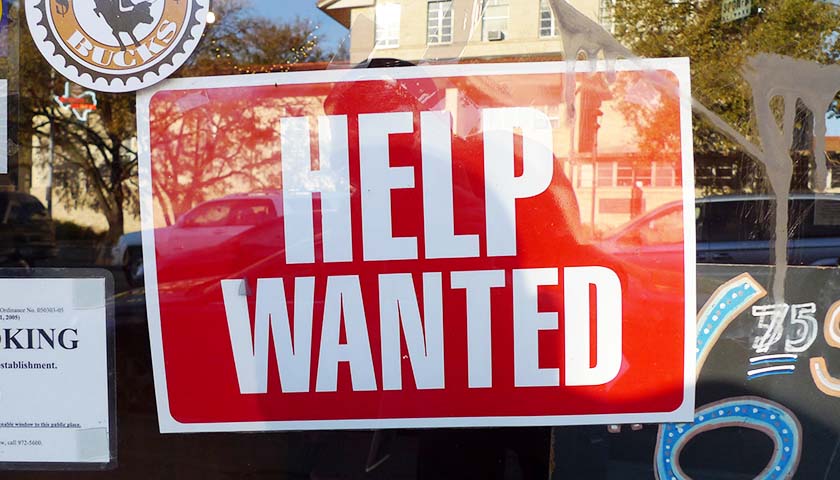A report released this week by Pennsylvania’s Independent Fiscal Office (IFO) indicates that 120,000 fewer residents are working or actively seeking work than in the year before the COVID-19 pandemic hit.
The study showed the state’s labor force participate rate (LFPR) for those aged 16 and older to be 63 percent in May 2019 and to have declined to 61.9 percent one year later. That percentage has continued gradually decreasing – to 61.8 percent in May 2021 and to 61.7 percent two months ago.
IFO analysts said this is a major reason why the commonwealth’s unemployment rate is at 4.6 percent, comparable to the rates in the two years prior to the novel coronavirus reaching American shores.
“…[C]urrent data show that the unemployment rate and number [of] unemployed are relatively low not only due to strong labor demand, but also because many workers left the labor force and no longer work or actively seek employment,” the report reads.
Data demonstrate that there were 1.25 employment opportunities for each jobless Keystone-State resident in April 2022, a ratio significantly higher than the ones existing in the two years prior to COVID hitting – 0.90 and 0.95, respectively.
In April 2020, the month after Gov. Tom Wolf (D) began implementing lockdowns and school closures in response to the pandemic, there were five unemployed Pennsylvanians for every job opening. The ratio of job openings to unemployed individuals reached 0.91, a number similar to the pre-COVID ratio in April 2021 before expanding to 1.25 this spring.
“Relative to the pre-COVID rate, the current ratio implies unmet demand of roughly 100,000 additional workers at current wage rates,” the IFO stated.
Labor-force contraction since 2019 has been more pronounced in Pennsylvania than it has been in the United States overall. In May 2019, the U.S. LFPR was 62.9 percent, roughly the same as Pennsylvania’s rate. Last year, slightly more than one year since COVID showed up, American labor participation and Pennsylvania’s rate were also comparable: 61.6 percent and 61.8 percent, respectively.
But those percentages diverged this May, with U.S. LFPR reaching 62.3 percent, close to the pre-COVID national rate and 0.6 percent above Pennsylvania’s current rate.
And while labor demand has rebounded in the Keystone state, the industrial landscape has been significantly affected. Sectors hardest hit in terms of employment in the commonwealth include nursing home and long-term care as well as full-service restaurants, both of which saw both a quarter of their employment vanish over the last three years. Nonprofits, manufacturers and employment agencies all saw their staffed positions fall by more than a tenth.
Exceptions to the jobs contraction were observed only for couriers and messengers, which saw their ranks go up 12.1 percent, and for warehouse and storage workers, who saw 33.5 percent job growth.
The IFO report suggests a number of reasons why a large number of state residents are no longer seeking work even after labor demand has returned. With the decline in nursing home employment and a concomitant 164,000-person increase in the over-65 population, many adult children of these elderly residents may have left the labor force to provide care themselves.
School closures also altered the home lives of millions of Pennsylvanians, and many of them have decided to keep children in the home for their education rather than sending them to brick-and-mortar schools. Since October 2019, 19,700 more students have enrolled in cyber charter schools and 15,900 have become newly home-schooled.
“Parents who now opt for at-home instruction may have worked previously and departed the labor force to oversee their children’s education,” the report states. “If one half of the higher enrollments at cyber charters and homeschooling have a parent at home that worked prior to the pandemic and the average household has two pupils engaged in remote learning, then it could explain a reduction in the labor force of 9,000 workers.”
Other potential causes of labor-force withdrawal mentioned by the IFO include increases in food stamps and other government benefits as well as difficulty obtaining childcare.
– – –
Bradley Vasoli is managing editor of The Pennsylvania Daily Star. Follow Brad on Twitter at @BVasoli. Email tips to [email protected].
Photo “Help Wanted Sign” by Andreas Klinke Johannsen. CC BY-SA 2.0.





